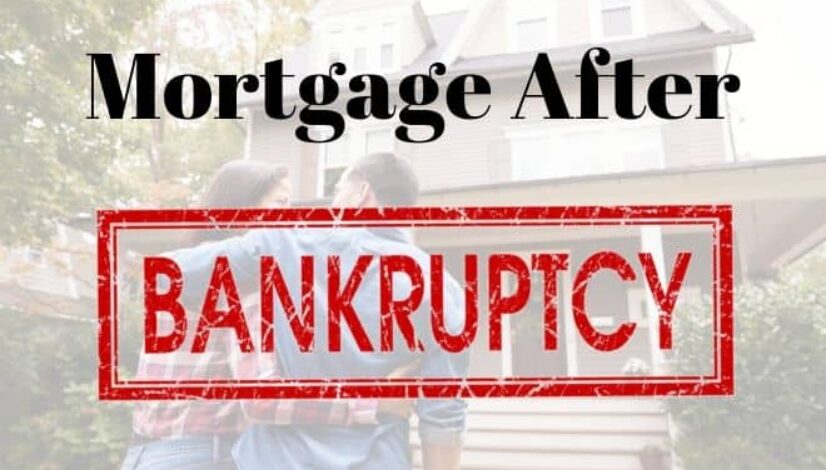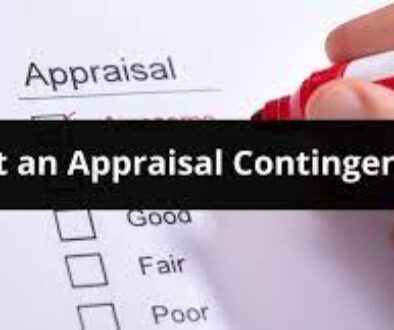Can You Refinance Your Bankruptcy
Purchase Money Mortgage
Can You Refinance After Bankruptcy?
Do you have a bankruptcy on your record? If so, you might think it’ll be impossible for you to refinance your home. While it’s true that bankruptcy affects your mortgage, refinancing isn’t totally out of the question.
Can You Refinance Your Mortgage After Bankruptcy?
The good news is that yes, most borrowers can refinance a mortgage after bankruptcy – but it’ll take years of effort at repairing your credit before most reputable lenders will approve your refinance application at reasonable interest rates.
The bad news is that, in the meantime, homeowners who’ve experienced bankruptcy need to be keenly aware that many mortgage scams prey on people with credit problems.
But first, let’s consider the different types of bankruptcies and how they affect your mortgage and financial future.
See What You Qualify For
Refinancing After Chapter 7 Vs. Chapter 13 Bankruptcies
The process you’ll follow to refinance after bankruptcy depends on the type of bankruptcy you’ve gone through. Let’s go over the differences between the most common types of bankruptcy available to individuals, Chapter 7 and Chapter 13.
What Is A Chapter 7 Bankruptcy?
Chapter 7, sometimes called a traditional bankruptcy, discharges your debts. The debtor might have to liquidate some of their property to satisfy some of their debts, but there are exemptions that generally protect the primary residence and a personal vehicle that are within value limits, and most personal belongings. In return, the debtor walks out of bankruptcy court with a mostly debt-free clean slate.
Chapter 7 bankruptcies stay on your credit report for 10 years.
What Is A Chapter 13 Bankruptcy?
You can think of a Chapter 13 bankruptcy as a softer form of bankruptcy. It doesn’t get rid of all of your debt, but it does allow you to restructure your debt and hang onto your property. This procedure may allow you to spread your payments over a longer period of time or only pay back part of your loan.
Chapter 13 bankruptcies leave your credit report after 7 years.
Can You Refinance During A Chapter 7 Or Chapter 13 Bankruptcy?
No. who is in the process of declaring bankruptcy, and even if you found one that would, it would be highly unusual for a bankruptcy court to allow it. However, mortgage companies can allow a refinance after a Chapter 7 or Chapter 13 waiting period.
Waiting Periods: When Can You Refinance After Bankruptcy?
You can’t refinance until your bankruptcy waiting period is over. Both types of bankruptcy have a specific time frame during which you cannot get a mortgage loan or refinance.
Waiting Periods For Chapter 7 Bankruptcies
The waiting period before you can refinance following a Chapter 7 bankruptcy varies depending on the type of loan you have.
Government-Backed Loans
Government backed loans like Federal Housing Administration (FHA) loans and Department of Veterans Affairs (VA) loans require borrowers to wait at least 2 years after the discharge or dismissal date before they can refinance their loan.
Conventional Loans
Government-sponsored mortgage financiers Fannie Mae and Freddie Mac dictate their minimum requirements for lenders offering conventional refinance loans to homeowners after bankruptcy. They require lenders to wait 4 years after a debtor’s discharge or dismissal date for a conventional loan. Remember not to confuse your discharge or dismissal date with the date you filed for bankruptcy.
Jumbo Loans
If you have a jumbo loan, you’ll have to wait a bit longer to refinance after your Chapter 7 bankruptcy. The waiting period for those requiring a jumbo loan for their refinance is 7 years.
Waiting Periods For Chapter 13 Bankruptcies
Now let’s take a look at the waiting period for those who have filed Chapter 13 bankruptcy.
Government-Backed Loans – Those with FHA and VA loans do not have to wait before they can refinance after Chapter 13 bankruptcy. You can qualify for a refinance as little as a day after the discharge or dismissal date of your Chapter 13 bankruptcy if you have a government-backed loan.
Conventional Loans – When you file Chapter 13 bankruptcy, the waiting period is 2 years after discharge if you have a conventional loan, but the bankruptcy must have been filed more than 4 years from the time your credit is pulled.
Jumbo Loans – As with Chapter 7 bankruptcies, those with a jumbo loan will have to wait the most amount of time to refinance after a Chapter 13 bankruptcy. For this type of bankruptcy, the waiting period for jumbo loans is still 7 years.
Requirements For Conventional Loans May Vary
As we’ve noted above, conventional refinance loans are made by private lenders without government backing – and those lenders are free to set their own, stricter requirements for approving refinance loans.
You may also need additional documentation that will vary depending on the loan program you’re applying for. Finally, you’ll need to meet the individual standards of the lender you’re working with to qualify for a refinance.
These standards apply to anyone with a bankruptcy with a single major exception, though. In some cases, if you’ve had more than one bankruptcy of any type over the last 7 years, the most recent bankruptcy must be discharged or dismissed for 5 years before you can refinance your loan.
What Are The Benefits Of Refinancing After Bankruptcy?
Are you wondering if you should refinance? Refinancing after a bankruptcy can actually have a number of advantages. Let’s take a look at some of them now.
More Manageable Payments
You can lower your monthly payment when you refinance to a longer loan term or a lower mortgage rate. This can help save you from falling into financial trouble. To see how much you could save by refinancing, use our refinance calculator. Assume you’ll be charged a higher interest rate if the bankruptcy is still on your credit report.
Cash To Cover Debts
Most types of bankruptcy (even Chapter 7) allow you to keep some form of equity in your home. Do you qualify for a cash-out refinance? If you apply for a cash-out refinance after a Chapter 7 or Chapter 13 bankruptcy, you can take on a higher principal balance and get the difference in cash from your lender. You can put this cash toward debt payments and help improve your credit faster.
Lower Interest Rates
Are interest rates lower now than when you initially got your loan? This may help you save thousands of dollars over the course of your loan. However, keep in mind that you may not have access to the best interest rates unless your previous bankruptcy expired from your credit profile.
Considerations For Refinancing After Bankruptcy
Think that now might be the right time for you to refinance? Here are a few things to think about before you apply:
Meet The Minimum Credit Score Requirements
Bankruptcies hurt your credit score. No matter which type of loan you choose, you’ll need to meet minimum credit score standards before you qualify to refinance. With a massive hit on your credit rating, you may need to focus on raising your score prior to your refinance. To avoid disappointment, know your credit score and your loan’s minimum credit requirements before you apply.
Save For Closing Costs
You’ll still need to pay closing costs with most refinances. Chances are you won’t have much in savings after a bankruptcy. These costs can equal 3% – 6% of your total loan value. You may be able to roll your closing costs into the principal of your loan or have your lender pay the closing costs and take a higher rate.
Document Your Finances Carefully
Lenders need to know that you have your finances under control before you can refinance, no matter which type of bankruptcy you have on your record. You can improve your chances of a successful refinance by keeping proof of your income and gathering documentation that proves you’re paying your bills on time.
There are plenty of apps and desktop software that can help you keep impeccable records and keep your financial facts at the ready to answer any questions a lender may have.
You may also want to get a letter from your employer that attests to your excellent performance and your long-term potential with the company. This tells lenders that you’re unlikely to lose your job and fall into financial trouble. Be upfront and honest with lenders, and stay positive.
Monitor Your Credit Report
It’s also important to review your credit reports regularly. Credit reporting bureaus must remove your bankruptcy from your credit report after 7 – 10 years, depending on which type you filed. However, credit reporting errors are common, and your old bankruptcy might still appear on your report. Make note of the date that your bankruptcy should no longer appear on your credit report, and make sure to follow up.
How To Refinance After Bankruptcy
Step 1: Choose A Lender And Apply
The first step in any refinance is to apply with a lender of your choice. Feel free to shop around to see which lenders can offer you the best deal.
If you qualify for a home loan through the Federal Housing Administration (FHA), the Department of Veterans Affairs (VA) or U.S. Department of Agriculture (USDA), you may have a better chance of successfully refinancing. These government-insured mortgages can – in some cases – be approved for borrowers with credit scores as low as 500, depending on your loan-to-value ratio (LTV). Rocket Mortgage® requires a minimum credit score of 580 to refinance with these types of loans. These applications may also be handled through manual underwriting procedures that give borrowers a chance to tell their story to a human being instead of an algorithm.
The lending mamba proudly offers both FHA loans and VA loans. We’re not offering USDA loans at this time.
Providing Documentation
Once you choose a lender, you can speed up the refinancing process by having all of your documentation in order before you apply for your new loan. Some documents you should have handy include your:
- Two most recent W-2s
- Most recent pay stub
- Two most recent bank statements
Step 2: Lock In Your Rate
You’ll usually get the option to lock in your interest rate once you complete your mortgage application.Mortgage rates change on a daily basis, and when you lock in your rate, you’re securing today’s interest rate until your refinance closes.
Locking your rate protects you against increases in interest rates that happen before you close. It also helps you plan your finances after your loan closes by keeping your premiums predictable.
Most lenders allow you to lock your interest rate for 30 – 60 days. You’ll usually have to pay an additional fee if you want to keep your rate locked for longer than 60 days.
Step 3: Complete Underwriting
Your lender underwrites your loan after you submit all your documentation and paperwork. During the underwriting stage, your lender makes sure that you meet the minimum standards for a refinance and verifies your income.
Most underwriting processes take a few days to a few weeks, but any third parties involved with your loan can slow things down.
Step 4: Have Your Home Appraised
Your lender will also order a home appraisal during the underwriting stage. Just like your original home appraisal, a refinance appraisal gives you and your lender a rough idea of how much your home is worth.
Lenders require appraisals for refinances because they need to know that your home value hasn’t decreased since you bought your home.
Step 5: Close On The Loan
Once underwriting finishes and your appraiser finalises your estimate, your lender will schedule a closing meeting. At closing, you’ll have the opportunity to ask any last-minute questions about your refinance, sign your new loan agreement and finish your refinance.
Your lender will send you a document called a Closing Disclosure before your closing meeting. Your Closing Disclosure includes all the terms of your new loan and a tally of how much you’ll pay in closing costs. Once you get your Closing Disclosure, remember to tell your lender that you’ve received it. Your lender cannot schedule your closing until you acknowledge this document
The Bottom Line: Refinancing After Bankruptcy Is Difficult, But Not Impossible
It can be frustrating to know that even though you’ve put your financial difficulties behind you, the reality is that lenders will still judge you for your past missteps. With time and effort, though, you’ll be able to refinance your home and take advantage of your financial improvements.




